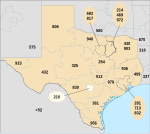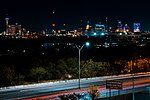O. Henry House Museum (San Antonio)
1959 establishments in TexasAC with 0 elementsHistoric district contributing propertiesHistoric house museums in TexasHouses completed in 1855 ... and 6 more
Houses in San AntonioLiterary museums in the United StatesMuseums established in 1959Museums in San AntonioO. HenryRecorded Texas Historic Landmarks

The O. Henry House Museum is a historic house museum located in San Antonio, Texas. It is named for the American writer, William Sydney Porter, better known by his pen name O. Henry, who lived in the house in 1885.
Excerpt from the Wikipedia article O. Henry House Museum (San Antonio) (License: CC BY-SA 3.0, Authors, Images).O. Henry House Museum (San Antonio)
Dolorosa Street, San Antonio
Geographical coordinates (GPS) Address Nearby Places Show on map
Geographical coordinates (GPS)
| Latitude | Longitude |
|---|---|
| N 29.424444444444 ° | E -98.497222222222 ° |
Address
Dolorosa Street 699
78207 San Antonio
Texas, United States
Open on Google Maps










